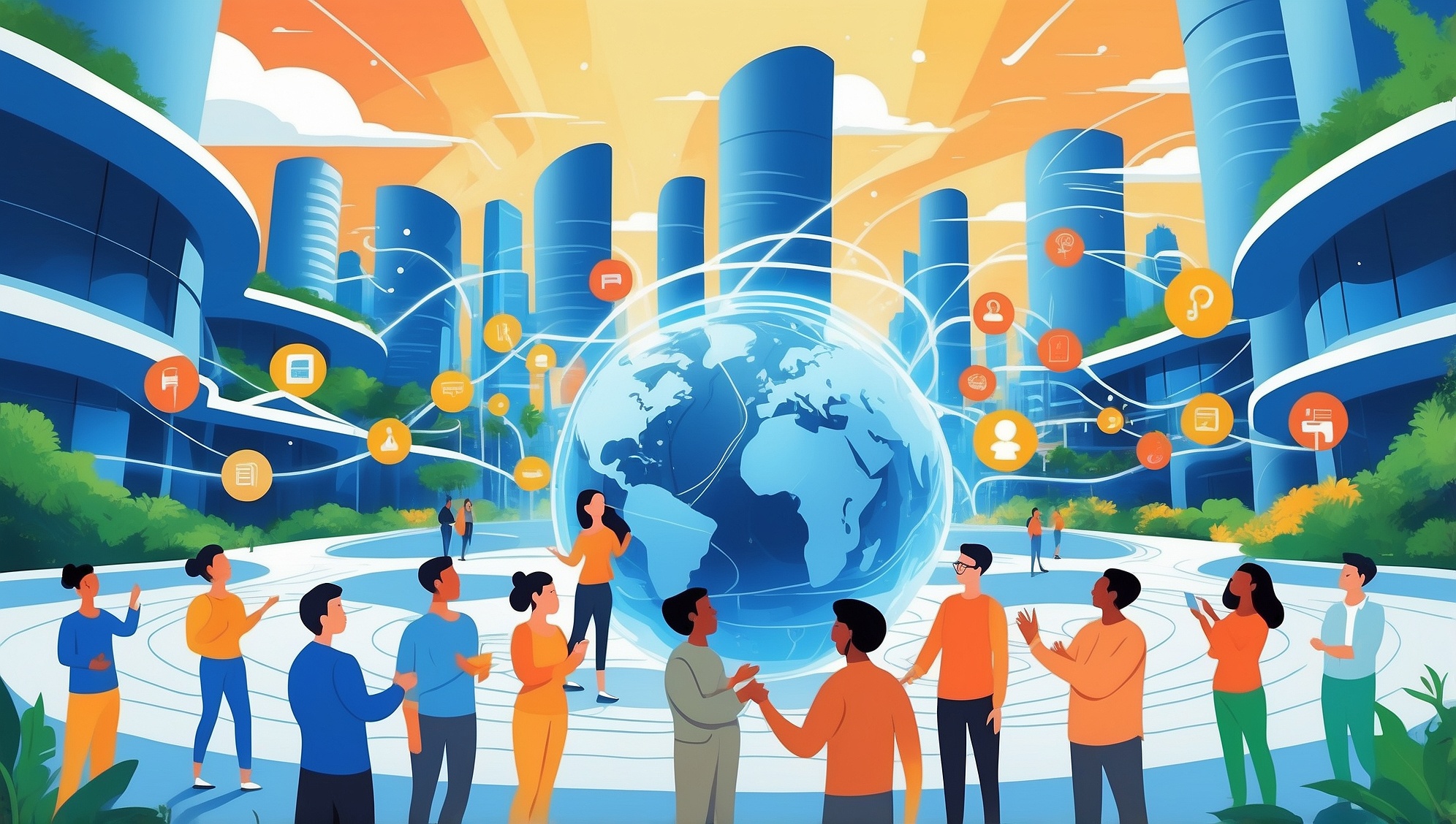Innovation hubs serve as catalysts for economic and social growth by creating ecosystems where collaboration, creativity, and technological advancements thrive. For Iowa’s Creative Corridor, these hubs are instrumental in driving regional development and ensuring sustainable progress.
What Are Innovation Hubs?
Innovation hubs are physical or virtual spaces designed to foster collaboration between entrepreneurs, researchers, educators, and community members. They provide resources such as coworking spaces, mentorship, access to funding, and technical support, enabling participants to transform ideas into tangible outcomes.
Key Ways Innovation Hubs Contribute to Regional Growth
Encouraging Collaboration Across Industries
Innovation hubs connect diverse sectors, including technology, healthcare, education, and manufacturing. By facilitating partnerships, they break down silos, enabling the exchange of ideas and expertise.
- Example: Partnerships between local universities and startups often lead to groundbreaking solutions in agriculture and bioengineering, addressing specific regional challenges.
- Impact: These collaborations result in products and services tailored to local and global markets, boosting the region’s reputation as a leader in innovation.
Supporting Startups and Entrepreneurs
Startups and small businesses benefit significantly from innovation hubs. Resources such as seed funding, accelerators, and mentorship programs reduce the barriers to entry for new ventures.
- Resources Provided:
- Business development workshops
- Networking opportunities with potential investors
- Access to state-of-the-art tools and technology
- Impact on Iowa’s Creative Corridor: By nurturing startups, innovation hubs create jobs and retain talent, preventing brain drain to larger cities.
Attracting and Retaining Talent
Innovation hubs help regions like Iowa’s Creative Corridor attract skilled professionals by offering vibrant work environments and career growth opportunities.
- Programs That Work:
- Internship opportunities for college students within the hub’s network
- Skill development initiatives for mid-career professionals transitioning to emerging industries
- Result: A more robust and dynamic workforce directly contributing to regional economic stability.
Driving Technological Advancements
Innovation hubs often host research labs and facilities where cutting-edge technologies are developed. These advancements can significantly impact local industries.
- Examples of Regional Impact:
- Precision agriculture solutions enhancing farming efficiency in Iowa
- Renewable energy technologies aligning with the state’s sustainability goals
- Outcome: Industries adopt new technologies faster, strengthening their competitiveness.
Strengthening Community Ties
Community-focused programs encourage residents to engage with startups in the Creative Corridor, fostering a culture of support and collaboration. These initiatives inspire locals to champion small businesses and participate in the region’s innovation-driven growth. By acting as community anchors, innovation hubs bring together people with shared goals and values, encouraging a sense of pride and ownership.
- Community Benefits:
- Public events showcasing local innovations
- Opportunities for residents to engage in upskilling and lifelong learning
- Long-Term Effect: A connected and supportive community that works collectively toward shared objectives.
Examples of Successful Innovation Hubs in Iowa’s Creative Corridor
NewBoCo (New Bohemian Innovation Collaborative)
Located in Cedar Rapids, NewBoCo supports startups, education, and innovation through programs like Iowa Startup Accelerator and DeltaV Code School. Its impact extends to fostering tech talent and encouraging entrepreneurial activity across the state.
University of Iowa Research Park
This hub serves as a bridge between academia and industry, facilitating technology transfer and commercialization of research. It has played a pivotal role in advancing medical and engineering innovations in the region.
MERGE in Iowa City
MERGE provides coworking spaces, business resources, and networking events tailored to entrepreneurs and small businesses. Its presence strengthens the local entrepreneurial ecosystem and drives collaborative projects.
The Role of Innovation Hubs in Bridging Urban and Rural Gaps
Innovation hubs can reduce the disparity between urban centers and rural areas by spreading opportunities more evenly. By extending their reach into smaller communities, hubs ensure that rural entrepreneurs and businesses benefit from the same resources and connections available in larger cities.
- Tactics to Bridge the Gap:
- Mobile workshops and pop-up events in rural locations
- Virtual access to innovation hub programs and mentorship
- Impact: Empowering rural areas to contribute meaningfully to the region’s economy.
The Economic Ripple Effect
Job Creation
Innovation hubs directly create jobs through new businesses and indirectly support employment through industry growth.
Increased Investment
The presence of a thriving innovation hub attracts investors and corporations looking to capitalize on the region’s potential.
Higher Tax Revenue
Economic growth fueled by innovation hubs leads to increased tax revenue, which can be reinvested into public services and infrastructure.
Challenges and Opportunities
Challenges
- Funding Limitations: Securing consistent financial support for programs and facilities remains a challenge.
- Talent Shortages: While hubs attract talent, they must also address skill gaps in the local workforce.
Opportunities
- Collaboration with Educational Institutions: Developing tailored programs that align with industry needs.
- Leveraging Federal and State Grants: To fund long-term growth initiatives.
A Vision for the Future
For Iowa’s Creative Corridor, investing in innovation hubs is not just about economic growth—it’s about shaping a community that values creativity, collaboration, and resilience. By continuing to prioritize these spaces, the region can position itself as a model for sustainable and inclusive development.
